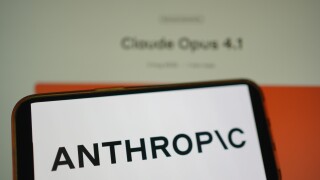Firm
Molly Kocialski, who has joined Holland & Hart after nearly a decade as a USPTO regional director, discusses career shifts, resilience, and overcoming casual sexism
Brian Horne reveals how his team secured a favourable damages outcome in a patent and trade secrets case involving X-ray technology
The five-partner team enhances Sheppard Mullin’s technology and life sciences capabilities, expanding its IP practice to more than 130 practitioners
Benjamin Grzimek, partner at Casalonga’s new Düsseldorf office, believes the firm is well-placed to challenge German UPC dominance
Sponsored
Sponsored
-
Sponsored by Sonn & PartnerUntil 2017, it was clear from several decisions of the Austrian Supreme Court that trade marks registered in bad faith were invalid and therefore could be successfully attacked any time and that asserted rights based on them would be rejected as immoral. However, the decisions went further: the mere use of that sign was held to be inadmissible and therefore could be forbidden as such without any other reason.
-
Sponsored by Daniel LawIn Brazil, the courts, rather than the Brazilian Patent and Trademark Office (BPTO), have the final say about the registration or cancellation of a patent, design or trade mark.
-
Sponsored by Cabinet Beau de LoménieThe name of the castle of Ludwig II of Bavaria, Neuschwanstein, was filed as a European trade mark by the Free State of Bavaria in many classes of goods and services (3, 8, 14-16, 18, 21, 25, 28, 30, 32-6, 38 and 44). As its validity was contested, the question arose as to whether such a name was descriptive of the geographical origin of the goods and services claimed in the application.
-
Sponsored by OLIVARESMexico is a nation made up of diverse cultures supported by its indigenous people. The population that is considered indigenous represents 21.5% of the total population of the country.
-
Sponsored by Hanol IP & LawWhen inventions/designs are disclosed to the public by one of the inventors/designers or applicants, a one year grace period is available in Korea for patent, utility model, and design applications.
-
Sponsored by Hanol IP & LawIn 2015, the Korean Supreme Court cleared the patent eligibility hurdle for dosage regimen inventions, and announced that dosage regimens are patentable if they satisfy other patentability requirements including novelty and inventiveness (Supreme Court en banc decision 2014Hu768, May 21 2015). In the first case where the inventiveness of a dosage invention was at issue (Patent Court decision 2015Heo7889, February 3 2017), the Korean Patent Court denied inventiveness on the ground that optimising dosage regimens to achieve the reduction of toxicity or improvement of efficacy is considered routine experimentation or work of a person having ordinary skill in the art (PHOSITA). This shows that Korea has a strict standard for the inventiveness of dosage regimen patents.




















